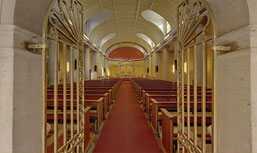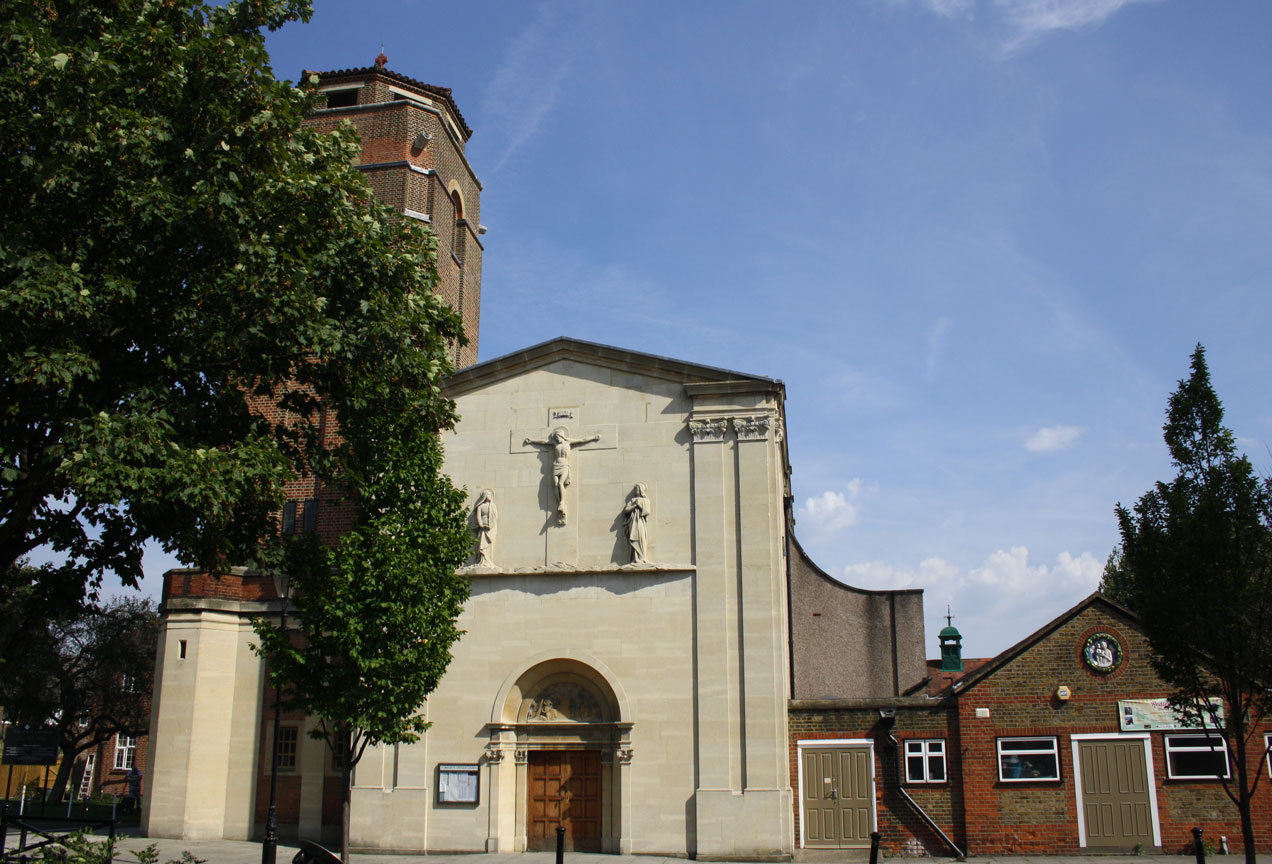THE ISLEWORTH CATHOLIC COMMUNITY
TIMELINE
1675 Suggested date of origin of the mission. Shrewsbury House or Place first occupied by a member of the Catholic Talbot family who set up a domestic chapel and maintained a chaplain. Lost registers supposed to date from this year.
1743 Bishop Challoner visits Shrewsbury Place to confirm 23 people.
1746 First entry in surviving register.
1758 The Vestry [the local authority] issues a writ alleging that a Catholic chapel has been in use at Shrewsbury Place for [more than] 30 years and requiring the chapel closed and the priest to leave on the grounds that it was a threat to the Established Church. The Brentford magistrates throw out the case.
1767 The Bishop of London's Return of Papists lists 1 priest, 28 male and 31 female Catholics as resident in the Parish of Isleworth. This is the third largest concentration in Middlesex.
1770 Shrewsbury Place in use as a boys school with 60 pupils, all Catholics.
1778 First Catholic Relief Act - decriminalises the Catholic priesthood.
1779 Second Relief Act - permits churches, chapels and schools.
1798 Shrewsbury Place buildings demolished and a free-standing chapel provided by the Earl of Shrewsbury, one of the first to be built under the 1779 Act..
1810 The priest is Anthony Wareing and the Sunday congregation numbers about 20.
1829 Catholic emancipation – restoration of most civil rights to Catholics.
1841 Madame d'Houet acquires Gumley House as a convent for her Faithful Companions of Jesus and opens two girls schools - a private boarding school and a poor school for the children of the town; the forerunners of Gumley and St Mary's Schools respectively.
1850 Restoration of the Catholic hierarchy in England and Wales.
1851 National census of religious practice finds Anthony Wareing still the priest and 70-80 people worshipping regularly at St. Bridget’s.
1854 New Rector Mgr. Francis Weld opens a poor school for boys adjacent to the chapel.
1855 Mgr. Weld provides a new chapel at his own expense.
1892 Isleworth House is bought as a convent for the Poor Sisters of Nazareth and renamed Nazareth House.
1896 – 1922 The Little Company of Mary [nursing sisters] occupies Gunnersbury House, London Road as novitiate and nursing home.
1899 - 1908 A community of Carmelite Nuns occupies Silver Hall in North Street
1906 Fr. Eric Green becomes Rector.
1907 Fr. Green begins the annual Martyrs or Outdoor Procession.
1908 New Boys' School opened at Twickenham Road/South Street on land given by the Misses Saunders of Silver Hall.
1909 New church built next to the Boys' School. Paid for by Mrs Macdonnell of Nazareth House.
1910 New church consecrated. Children's home and chapel built at Nazareth House.
1922 Clock Tower War Memorial outside the church opened.
1925 War memorial inside the church unveiled by the Viscount Fitzalan.
1926 Tower added to new church.
1927 Bell installed and dedicated to St Michael in memory of the poets Ruth Bradley and Edith Cooper who wrote under the pen-name 'Michael Field'.
Late 1920s Guild Hall added.
1935 New rectory built.
1970 Canonization of Isleworth Martyr, Richard Reynolds.
2002 Nazareth House closes.
2009 The parish celebrates the centenary of the opening of the present church.





